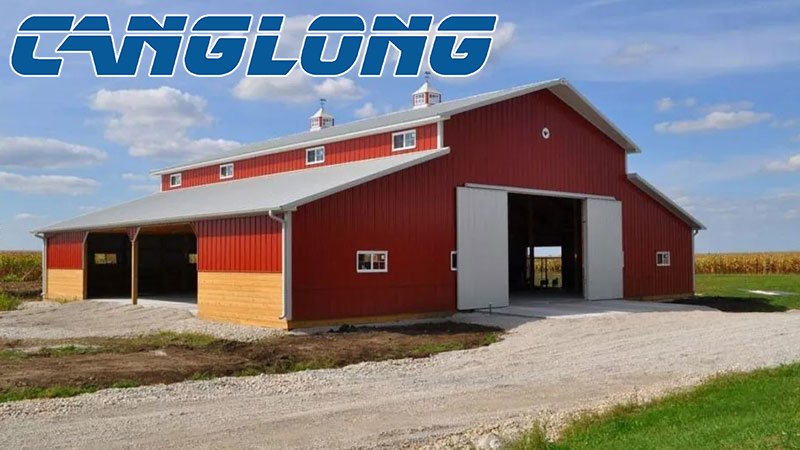How do farm metal buildings compare to pole barns?
In the vast landscape of agricultural infrastructure, the choice between farm metal buildings and pole barns is a critical decision that impacts the efficiency, longevity, and overall success of farming operations. Both structures serve essential purposes, but they differ significantly in terms of design, durability, cost, and versatility. This article delves into the key aspects that set these two types of farm structures apart.
Design and Aesthetics
Pole barns, also known as post-frame buildings, are characterized by their simple yet sturdy design. They rely on a series of vertical poles or posts embedded in the ground to support the horizontal beams and roof structure. This traditional design often appeals to farmers who value the rustic charm and aesthetic harmony with the surrounding countryside.
On the other hand, farm metal buildings exhibit a more modern and industrial look. Made primarily from steel or aluminum, they boast sleek lines and can be customized with various colors, textures, and accents to blend with or contrast the natural environment. Metal buildings often incorporate advanced architectural elements, such as skylights and overhangs, to optimize natural lighting and weather protection.

Durability and Longevity
When it comes to durability, farm metal buildings have a clear advantage over pole barns. Metal is inherently resistant to rot, pests, and fire, making it an ideal material for structures exposed to harsh agricultural environments. Steel, in particular, is known for its strength and longevity, ensuring that metal buildings can withstand heavy snowfall, high winds, and even earthquakes.
Pole barns, while sturdy, are more susceptible to damage from weather extremes and insect infestation. Wooden posts can rot over time, compromising the structural integrity of the building. Additionally, pole barns may require more frequent maintenance, such as repainting or replacing damaged wood components.
Cost Considerations
The cost of constructing a farm metal building versus a pole barn varies depending on several factors, including size, materials, and labor costs. Initially, pole barns may appear to be more cost-effective due to the relatively low cost of wood and the availability of skilled carpenters. However, when considering the long-term costs associated with maintenance and potential repairs, metal buildings often prove to be a more economical choice.
Metal buildings are typically prefabricated in factories, which streamlines the construction process and reduces labor costs. They also require less maintenance, further reducing long-term expenses. Although the upfront investment in a metal building may be higher, farmers can expect a significant return on their investment over the lifetime of the structure.
Versatility and Customization
Farm metal buildings offer unparalleled versatility and customization options. They can be designed to accommodate a wide range of agricultural needs, from livestock housing to equipment storage to processing facilities. Metal buildings can be easily expanded or modified to suit changing farming operations, ensuring that they remain functional and relevant for years to come.
Pole barns, on the other hand, are more limited in their versatility. While they can be adapted to various uses, their traditional design and reliance on wooden posts can make expansion or modification more challenging and expensive.
Environmental Impact
Lastly, it's worth considering the environmental impact of both types of farm structures. Metal buildings are generally more sustainable, as steel and aluminum are recyclable materials. This means that when a metal building reaches the end of its lifespan, its components can be reused or recycled with minimal environmental impact.
Pole barns, on the other hand, often rely on lumber sourced from forests. While sustainable forestry practices can mitigate the environmental impact of timber harvesting, the disposal of old or damaged wooden components can contribute to waste and deforestation.

Conclusion
In conclusion, farm metal buildings and pole barns each have their own unique strengths and drawbacks. While pole barns may offer a more traditional and cost-effective solution for some farmers, metal buildings offer superior durability, versatility, and long-term value. When making a decision between these two types of farm structures, farmers should carefully consider their specific needs, budget, and long-term goals to determine which option best suits their operation.





